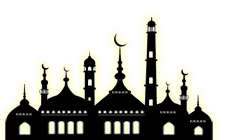loooool omg you're funny

"little bicycle tire." Well since you brought up clothing, let's go through the basic terminology from top to bottom

Worn first on head, under scarf, called a
tageeya (also known as kufi):

Then comes the
Ghutra, which is basic name for any colored scarf, or called specifically Shmaagh for the red and white one:

Then there's the
i'gaal, which keeps the ghutraa in place.

And the white garment is called a
thobe (but can be in other colors as well), (they wear white garments underneath it (their name escapes me at the moment).)

and the fancy covering over the thobe is called a
bisht.

They wear it in several different styles, it just depends. In the dessert, they'll wrap it like a turban, or cover their faces to protect from the dust. If they are going to a special occasion, it's worn down as in the pics or it'll be flung back on the sides. The manner in which they put it on differs from region to region (eg. bedouin vs common folk, northerners vs southerners), tribe to tribe, and even country to country as a distinguishing factor. For example, in Oman and UAE, they traditionally wear it more like a turban. Historically the closest I've seen to the current style you're inquiring about is actually in the levant countries (Palestine, Jordan, Lebanon), not the Jews.
The way Saudis currently dress is purely cultural I believe, but logically, you can't expect them to be dressing the same exact way since 14 centuries ago

, especially when they are their own established country who are surrounded by other rich cultures with a changing environment. There's really not much information that I could find about how the people dressed before Saudi Arabia was established, (other than the descriptions of the prophet's clothing pbuh). However I see influences from Iraq, Yemen, Jordan, even influences from the bedouins of these countries. They also have to adapt to the climate changes. And as for how they style their ghutra, it depends on how they're feelin' lol. But I'll inquire about it more from a historical perspective inshallah. I don't consider the turban to be dead or non-existant by any means because I still see it worn. In the muslim countries, you'll see some parts of dress which are very sunnah-like, and others more cultural, but in general they all cover their heads to stay connected Islamically i suppose.
Edit: Here's a little history about the ghutra:
http://www.arabnews.com/news/460492






 "little bicycle tire." Well since you brought up clothing, let's go through the basic terminology from top to bottom
"little bicycle tire." Well since you brought up clothing, let's go through the basic terminology from top to bottom 





 I couldn't bring myself to eat anything with such puppy-like eyes and gorgeous, fluttery eyelashes. Btw, my dad has eaten camel meat and tells me it is apparently very salty.
I couldn't bring myself to eat anything with such puppy-like eyes and gorgeous, fluttery eyelashes. Btw, my dad has eaten camel meat and tells me it is apparently very salty.


 Hide
Hide Looks like you're enjoying the discussion, but you're not signed up for an account.
Looks like you're enjoying the discussion, but you're not signed up for an account.

Bookmarks